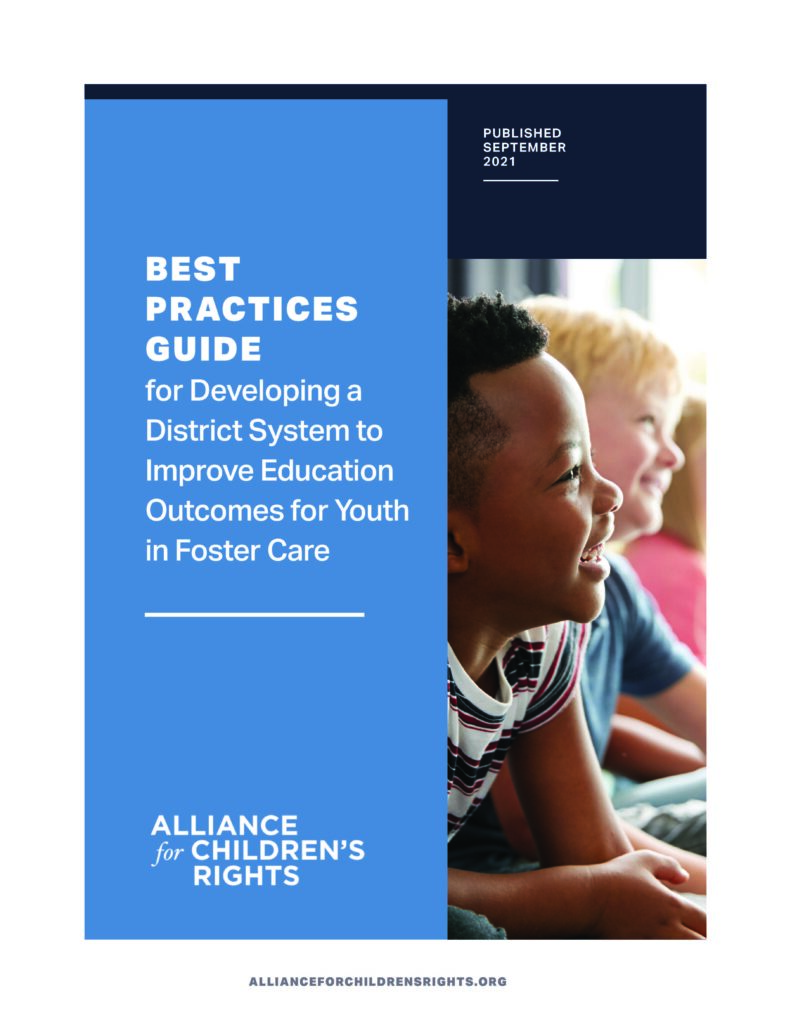The Best Practices Guide includes step-by-step guides for creating district-wide systems to consistently implement the education rights of youth in foster care, featuring relevant laws, tools, equity and trauma considerations, and data collection tips.
The Best Practices Guide is the result of a four-year partnership built between a network of six school districts and the Alliance for Children’s Rights, working to collectively implement and problem solve everyday barriers to meeting the education needs of youth in foster care. Topics covered include: identifying youth in foster care, school stability, immediate enrollment, partial credits, graduation, and data.
For several years, school districts and others supporting the education of youth in foster care have utilized the Foster Youth Education Toolkit and Court Companion as a foundation for meeting the education needs of youth in foster care and/or on probation. While those tools were designed to give LEA staff and others the tools to implement education rights for an individual youth, this Best Practices Guide is designed to help a district create a system and practice to consistently implement an education right for all youth in foster care that they serve.
We want to add a special thank you to the districts that participated in the network and creation of this Guide: Alhambra USD, Azusa USD, Bonita USD, Long Beach USD, Pomona USD, and West Covina USD.
We also want to thank all those who provided thoughtful expert input throughout the process: the Association of California School Administrators, California County Superintendents Educational Services Association, California Department of Education, California Department of Social Services, California School Boards Association, Child Welfare Council, County Welfare Directors Association of California, and the Education Coordinating Council.
We also want to extend our gratitude to ECMC Foundation, Conrad N. Hilton Foundation, and Stuart Foundation for their generous support and partnership in this project.
Finally, thanks to everyone in our community who is working to topple barriers and create equitable learning environments for all students in our child welfare and juvenile justice systems. We hope that the Guide serves as a helpful tool in this work.


